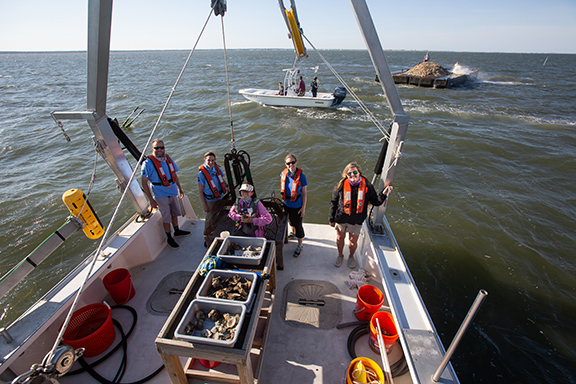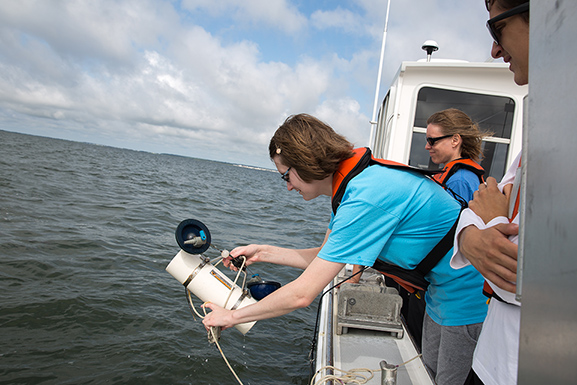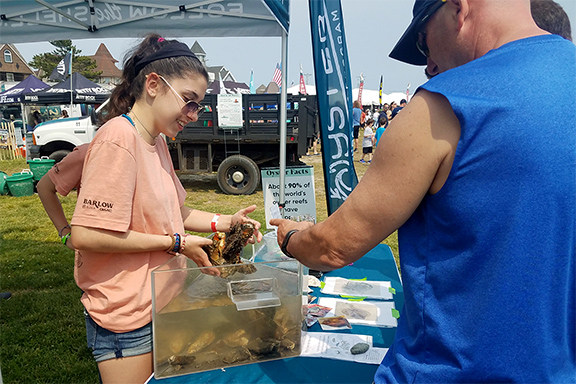Fall 2020 Issue
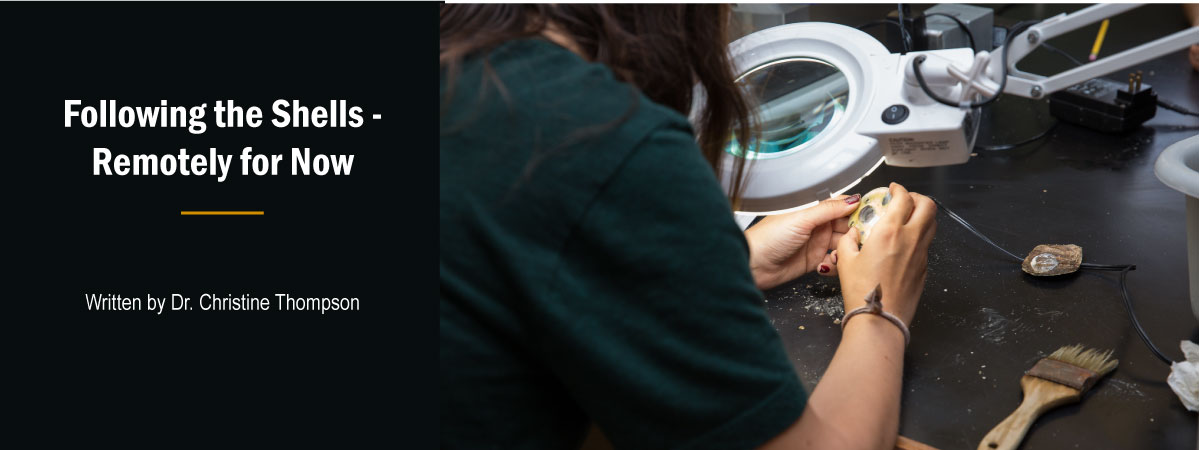
On June 9, 2020, over 400,000 shells containing 1.7 million baby oysters were blown off of a barge in the middle of Barnegat Bay on a breezy afternoon.
In what should have been a big milestone celebration, it was condensed to a sparsely populated boat and a couple onlookers. However, we had over 200 people join Stockton scientists and partners virtually through a live stream event from the R/V Petrel. During the virtual event, we were able to bring to life the science and partnerships that got this project to its fifth planting on the site, which is located between the towns of Tuckerton and Beach Haven in Little Egg Harbor.
This July will mark the fourth anniversary of the creation of the Tuckerton Oyster Reef. The project started as a partnership with Stockton University, Parsons Seafood and the American Littoral Society, made possible through a grant from the Barnegat Bay Partnership. The project idea was to create oyster reefs in two areas of Barnegat Bay using aquaculture techniques to jump-start the oyster population. Shell containing baby oysters (known as “spat”) were planted on the reef sites in 2016 using two shell types We monitored the reef for two years trying to determine the best site and method for future reef building.
Two years later, we were able to expand the reef with a second round of funding from the Barnegat Bay Partnership with support matched from the Jetty Rock Foundation and a new shell recycling program growing out of Long Beach Island. Outreach programs increased through the Jetty Rock Foundation’s Oyster Recycling Program and The Oyster Farmers film, inviting people to understand the relationship between people, the bay, and a small organism that filters water and plays an important role in coastal ecosystems.
In its natural state, an oyster reef is a densely covered area of shells growing on other shells, stacked like LEGO-bricks. These shells provide hard substrate for other organisms to attach and grow, such as anemones, sea squirts, barnacles and sponges. The 3D structure of the reef provides crevices for small fish and crabs to hide and dart in and around the shells as they feed. Larger fish predators stake out oyster reefs to try and hunt the smaller fish. The oysters themselves clear the water as they remove suspended particles while feeding. They can act as speed bumps slowing down waves that can lead to shoreline erosion in storms.
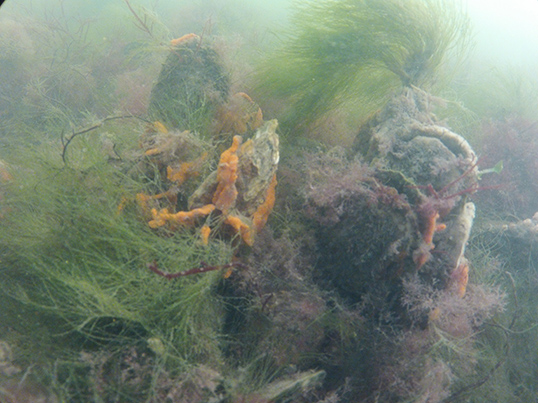
It is hard to imagine what an estuary like Barnegat Bay looked like in the 1800s when reefs covered the bay. Was the water crystal clear? Could you see right down to the bottom covered in oysters and fish swimming among them? Today, no boater would think twice about possibly scraping their hull on a reef breeching the surface at low tide. No swimmer would worry about cutting their feet on a jagged shell.
Many people don’t understand why oyster reefs are important, because no one alive today has seen them in their glory. This is a concept ecologists call shifting baselines. Farmed oysters have made the animal a staple food in raw bars, associating it with lemon wedges and hot sauce instead of fish and clear waters. No one thinks about the impacts that the last century has brought and how overfishing, disease, and environmental changes made the wild oyster functionally extinct in New Jersey coastal bays.
Over my past four years at Stockton, I’ve grown my research program just as we’ve built the reef, with students who work with me on projects tracking oysters from their time as larvae to adults, providing habitat and filtering water. I try to challenge them to come up with research ideas on their own that can be tested using the data collected from our monitoring events.
Last year, Rebeka Seymour, a senior in the Marine Science program, looked at how boring sponge, an oyster pest that can grow and degrade shells, impacts the condition of oysters on the reef. Kelsey Ward '19 worked with Drs. Sarah Gray and Elizabeth Pollock in the Chemistry Department in an interdisciplinary project to look at metal accumulation between oysters on the reef and from another restoration site in New York City. Ariel Petchel '20, a triple-major in Marine Science, Biology and Literature, created a water filtration model that uses environmental parameters collected on the reef. These projects reflect the biological, chemical, and physical benefits oysters can provide.
I had grand plans of establishing a few new projects this summer, such as installing Go-Pro cameras to record fish usage around the oyster reefs and adding chlorophyll sampling to our water quality monitoring through a partnership with the NJDEP Bureau of Water Monitoring and Standards. Instead, they are stuck at home, but still working hard on crunching the numbers and hoping to get back out in the field to follow the shells from the bay.
Learn more:
Stockton Research page: https://stockton.edu/marine/marine-oyster-restoration.html
Follow the Shell Program/The Oyster Farmers film: http://followtheshell.com/
Facebook live: https://www.facebook.com/1681884135386433/videos/303071494059952

